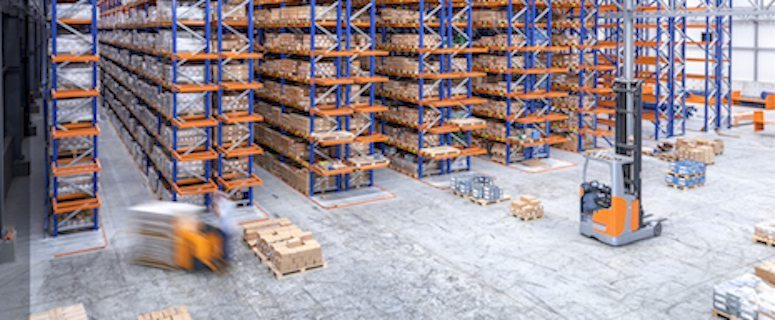
Global Contract Logistics 2017
Download todayAbout the Global Contract Logistics 2017 report
- Do you understand how technological and environmental changes are altering the 3PL landscape?
- Where are the world’s contract logistics growth hotspots?
- What are the fundamental drivers of change in retail and manufacturing logistics?
- How can the market size and growth of various shipper segments be assessed?
It is important to stay abreast of logistics trends and know more about how 3PLs are future-proofing their strategies to continue to support their clients, particularly in light of recent environmental legislation and technological advancements affecting the industry.
Ti’s annual Global Contract Logistics report examines both topics and provides analysis and evaluation of future practises expected in the industry. This analysis is provided from a broad, industry-wide perspective and is then channelled and examined within individual company profiles of major contract logistics providers. Each of the 18 profiles in the report include an overview of the company’s contract logistics capabilities and strategy, a SWOT analysis, and, wherever possible, a review of the company’s most recent financial performance and a table detailing the company’s most recent contracts.
In addition, Ti has ranked the leading contract logistics providers on both a global and regional basis (Asia Pacific, Europe and North America only), and provides the market shares of these providers based on Ti’s bespoke contract logistics market sizes. Along with this data, the report includes explanation and insight into which geographies’ contract logistics markets have the most growth potential and examines why regions are performing differently.
This report contains
- Analysis of environmental legislation and technological advancements affecting the contract logistics industry
- Extensive market size and forecasting
- Comprehensive profiles of major logistics provider strategies
- Rankings of the biggest players
- Insight into technological developments affecting the contract logistics industry
This report contains
- Analysis of environmental legislation and technological advancements affecting the contract logistics industry
- Extensive market size and forecasting
- Comprehensive profiles of major logistics provider strategies
- Rankings of the biggest players
- Insight into technological developments affecting the contract logistics industry
Exclusive highlights on contract logistics and the environment
- Fuels which were once regarded as a good alternative to carbon emitting petrol have come under scrutiny themselves.
- Banning diesel engines entirely would have a significant impact on the economies of major cities around the world.
- The ‘sharing economy’ could provide many opportunities to improve the efficiency of logistics in an urban context.
Exclusive highlights on contract logistics market size and forecasts
- The Global Contract logistics market grew by 3.9% in 2016, up from 3.7% in 2015.
- Asia Pacific has overtaken Europe as the biggest market for contract logistics.
- Seven of the 10 largest markets grew slower than in 2015.
- The market is forecast to grow at a real 2016-2020 compound annual growth rate (CAGR) of 4.8%.
The Top 10 Contract Logistics Providers
- DHL Supply Chain
- XPO Logistics
- Kuehne + Nagel
- Hitachi Transport System
- CEVA
- Geodis
- Nippon Express
- Neovia
- DB Schenker Logistics
- Ryder
Contract logistics and the environment
- How is environmental legislation going to change the contract logistics industry?
- Which countries operate low emission zones and what other restrictions are expected?
- What are the consequences of emission regulations on logistics real estate?
Contract logistics by vertical sector
- Which vertical sectors have the most impact on the contract logistics industry and why?
- What are the supply chain dynamics of different vertical sectors?
Market size and forecasts
- Who are the top 10 contract logistics providers in Europe, Asia Pacific and North America?
- Which region has the highest 2016-2020 compound annual growth rate?
- Which countries’ growth rates have bolstered that of their region?
Profiles of major contract logistics providers
- How are LSPs future-proofing their contract logistics capabilities?
- What do Ti analysts think the strengths and weaknesses of the major LSPs, and what opportunities and threats do they face?
- The Global Contract logistics market grew by 3.9% in 2016, up from 3.7% in 2015.
- Globalisation of supply chains, the growth of e-commerce and technological innovations have changed the structure of the contract logistics market, with logistics providers trying to retain their competitive edge by expanding their service portfolios either organically or via acquisition.
- While 2016 has seen contract logistics providers pursuing different growth avenues, expanding in high-margin markets was a common growth strategy, with the healthcare and pharmaceutical sector being identified as a particularly lucrative market.
- Supply Chain Operating Networks have provided a means of substantially improving supply chain visibility, but none of the competing vendors yet offers a complete solution.
- Blockchain holds great potential, and is still developing, but it is unlikely to be a silver bullet for supply chain visibility.
- Current battery technologies are insufficient to replace conventional internal combustion engines, and future replacements may take years to commercialise.
- Hydrogen fuel cells appear to be a promising technology, but the jury is still out on whether they will work in practice.
- Even though the level of consolidation in 2016 is estimated to have dropped compared to 2015, looking ahead the outlook for consolidation activity in the industry remains positive.
- For logistics providers to realise synergy effects in mergers and acquisitions, ensuring an effective post-acquisition integration is vital.
- The market is forecast to grow at a real 2016-2020 compound annual growth rate (CAGR) of 4.8%.
Global Contract Logistics 2017 finds that Asia’s outsourcing needs accelerated contract logistics growth in 2016
- The Global contract logistics market grew by 3.9% in 2016, up from 3.7% in 2015.
- Asia Pacific has overtaken Europe as the biggest market for contract logistics.
- Seven of the 10 largest markets grew at a slower rate than in 2015.
- The market is forecast to grow at a real 2016-2020 compound annual growth rate (CAGR) of 4.8%.
11 April 2017 Bath, UK – According to Ti’s Global Contract Logistics 2017 report, the overall contract logistics market is estimated to have grown by 3.9% in real terms in 2016.
Despite stronger global growth in 2016, many developed markets struggled to match even the modest growth rates seen in their contract logistics markets in 2015. This reflects trends in the global economy, where growth rates in advanced economies slowed overall. It would be too easy to match these struggles to the impacts of political events such as the US presidential election and the Brexit vote. In 2016, Barack Obama was still US president and the European Union had 28 members. Instead, weak real wage, productivity and consumption growth dampened global economic growth. Weak retail sales and manufacturing production growth in particular had major effects on the contract logistics market.
This information on its own would suggest an overall struggle for contract logistics in 2016. After all, it is a market associated with formalised retail structures, developed for larger corporations with desires for operational efficiency gains and value-added services. However, emerging markets are taking an ever-larger slice of pie. In fact, 2016 saw Asia Pacific become the largest regional market for contract logistics, overtaking Europe.
Asia Pacific’s strength is a result of a number of factors.
Sustained robust economic growth coupled with continued retail formalisation (thanks to rising disposable income) powers retail contract logistics.
Meanwhile, multinational manufacturers increasingly consider options outside China (especially nearby ASEAN) as production locations, primarily thanks to cheaper labour costs, all the while ingraining Factory Asia more deeply, a spur for the region’s manufacturing contract logistics. That being said, even with rising wages, manufacturing in China is still undeniably strong. As low cost manufacturing has departed, this has been offset by China moving up the chain to more value-added production.
Whilst Europe and North America suffer from both stagnating retail sales and manufacturing production growth, Asia is taking advantage, driving growth for the global market as a whole.
This trend is likely to continue in the medium term. Overall, the global contract logistics market is forecast to grow at a real 2016-2020 CAGR of 4.8%. Whilst economic growth rates in developed nations are forecast to pick up slightly, they will continue to be far surpassed by emerging markets. None of this is especially new, but it is the reality the market faces.
3PLs in developed nations will need to look at different aspects to improve their services in order to achieve better than average growth. They will need to address the omni-channel retailing needs of retailers that work online and through bricks-and-mortar stores. They will also need to adapt to disruptive technologies, incorporating practices faster than competitors and more than ever, 3PLs need to consider environmental impact, a theme covered in Ti’s Global Contract Logistics 2017 report.
In emerging markets meanwhile, achieving growth should be much simpler, at least in theory. Robust manufacturing and retail sales growth coupled with an increased appetite for outsourcing is a far more favourable backdrop than in advanced economies. The challenge as ever will be to operate successfully in a logistics and supply chain environment which is so often dramatically different.
Ti Economist, David Buckby, commented: “Manufacturing production and retail sales volume growth remain fundamental drivers of contract logistics. Manufacturing expansion in advanced economies remains weak while Asia Pacific, very much still including China, is seeing the lion’s share of growth. Retail is a different story. To an extent, e-commerce has bailed out contract logistics in advanced economies. I expect these trends to continue to shape the background of the contract logistics sector for the next few years at least.”
To find out more about Global Contract Logistics 2017, or Ti’s expertise in the contract logistics market, including analysis of its market size and forecasts broken down by regions and countries, strategies of the major 3PLs, analysis of technologies in the industry, visit the Ti website, or contact Ti’s Business Development Manager, Michael Clover.
This report is perfect for
- Global manufacturers
- Banks and financial institutions
- Supply chain managers and directors
- Logistics procurement managers
- Marketing managers
- Knowledge managers
- Investors
- All C-level executives





